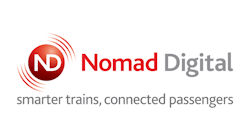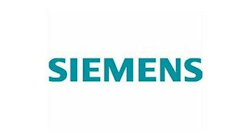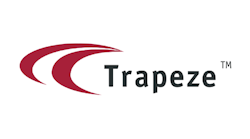The fifth edition of IT-Trans, International Conference and Exhibition on IT Solutions for Public Transport, is going to be bigger and more international than ever before. At the moment, 189 exhibitors from 30 countries have already registered for the event, which is to take place at the Karlsruhe Trade Fair Centre from March 1-3 (final count IT-Trans 2014: 164 exhibitors from 24 countries). They are already occupying net exhibition space which is roughly 50 percent bigger. About 5,000 visitors from around the world are expected.
“We are delighted to see this popularity, especially from abroad, and it emphasises the international relevance of IT-Trans”, said Britta Wirtz, managing director of Karlsruher Messe- und Kongress-GmbH (KMK),at the IT-Trans press conference. “For the first time, we will have exhibitors from Japan, New Zealand, Bulgaria, Slovenia, Serbia, and Estonia, among others. All renowned companies in the industry will be represented, including INIT, Trapeze, Lawo Toshiba, Siemens, Scheidt & Bachmann, Moovel of Daimler Group, Deutsche Bahn, Nomad Digital and many more.” With digitisation of public transport as a core topic, IT-Trans precisely meets the requirements of numerous transport companies which have put digitisation on the very top of their agenda for 2016, added Wirtz.
Digitisation brings together different mobility actors
The major trend for digitisation and utilisation of IT in public transport introduces big changes to the industry. “It is causing us to rethink the way in which our sector relates and connects to other modes, the city and its customers”, explains Jarl Eliassen, Expert for Information and Ticketing at the International Association of Public Transport (UITP), co-organiser of IT-Trans. The aspect of intermodality is especially important and opens up new possibilities for public transport services. “Digitalisation makes it possible to bring together a number of actors and modes. It allows operators and authorities to fully integrate additional services, including new mobility services, in their competencies and portfolios or to develop / support the development of integrated mobility platforms.” The vast amount of data generated through digitisation will additionally enable public transport companies to improve operations in administration, vehicle fleet and infrastructure and, above all, specifically address customer expectations.
Mobility as a service
“People want to reach their destination efficiently and flexibly. Multimodal is the simplest way to achieve this”, said Christophe Fondrier, managing director of highQ Professional Services GmbH, Stuttgart. Technological development allows today’s road users to make a new decision every second and to choose the best possible option for the current situation. “Mobility is a service”, underlined Fondrier. It is increasingly available through mediums such as cards and mobile devices. Easily accessible, interoperable, climate neutral, multimodal, with multioptional methods of payment – that’s what Fondrier’s vision of intelligent mobility looks like. A pilot project that puts this vision into practice is currently being rolled out in Stuttgart. “With Stuttgart Services – as a pilot project of the Baden-Württemberg electro-mobility shop window – we have paired 23 partners from all mobility sectors, different car-sharing providers, pedelec and bike rentals, with urban services in what is called the “polygo” card. The card is ready to launch.” At IT-Trans, highQ is going to demonstrate this best practice example, amongst other things.
Integration of services and distribution systems is becoming increasingly important
Cards or other mediums which the customer already possesses – like EMV-based contactless credit cards – increasingly simplify the ticket purchasing process. “This is one of the essential prerequisites for attractive public transport”, said Klaus Janke, Executive Director of Karlsruhe-based INIT. The support of best price calculation solutions sparing passengers the search for the right fare makes the use of public transport much easier, especially for occasional customers. Janke agrees that integrating services and distribution systems across different modes of transport is becoming increasingly important. “That means that a traveler is able to leave home by bike, lock it at a designated shelter, board a bus, and transfer to a train – all by using the same e-ticketing medium and without spending one further thought.” At the moment, INIT is implementing a ticketing project that offers passengers a multitude of alternative ticket purchasing options – with cash or by card, with a smart card, contactless credit card or smartphone – for the public transit agency in Portland/Oregon.






